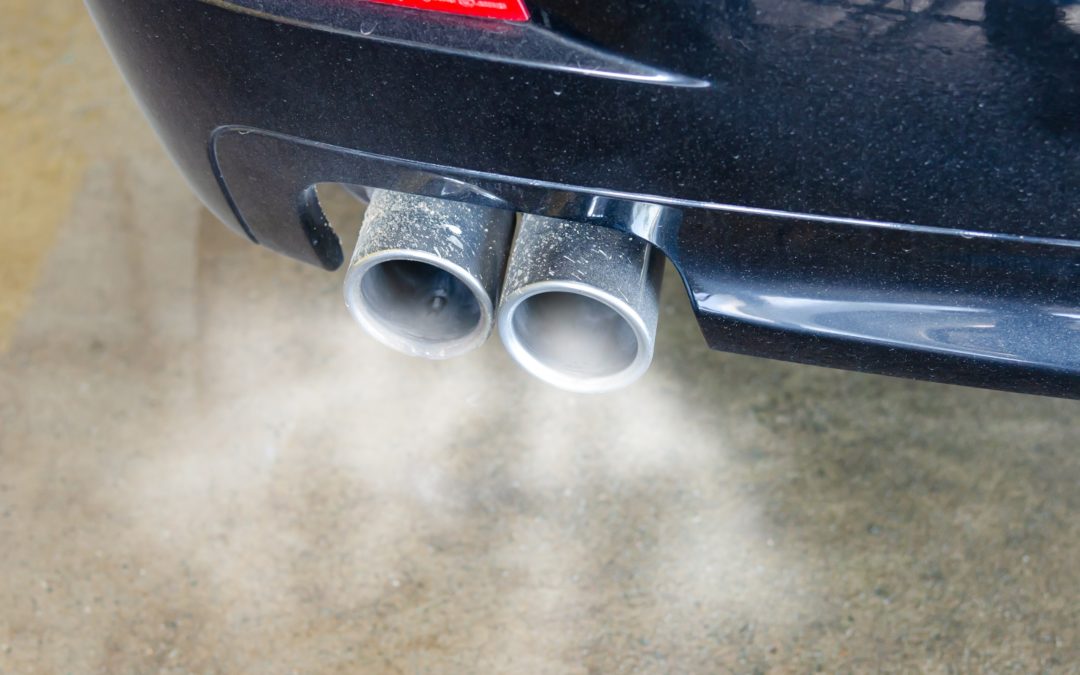Have you ever waited at a stop light behind another vehicle, and as soon as the light turned green and the vehicle in front accelerated you were shrouded in a cloud of smoke? If you have experienced this situation, it was most likely an indication of a vehicle exhaust system issue.
Simply stated, the primary function of your vehicle’s exhaust system is to filter toxic gases from the engine and safely and cleanly release them into the atmosphere. Additionally, your vehicle’s exhaust system is designed to reduce the noise associated with exhaust emission from your combustion engine.
In this blog, we review the key components of the exhaust system along with common exhaust system problems.
Exhaust System Basics
Your vehicle’s exhaust system is comprised of four main components, as follows:
| Exhaust Manifold | The exhaust manifold collects gases from the combustion chamber and directs them to the exhaust pipe. |
| Catalytic Converter | The catalytic converter uses a precious metal “catalyst” such as platinum to oxidize and convert harmful gases before they are emitted to the environment. |
| Muffler | The muffler impacts the sound of the exhaust system and helps overall exhaust system gas flow. |
| Tailpipe | The tail pipe is the end of the exhaust system that extends behind the vehicle to emit the gases into the air and away from the vehicle. |
While there are many other aspects of the exhaust system, these components play a major role in the function of this system.
So, how do they function together to exhaust your vehicle’s gases?
- The exhaust manifold collects gases from the engine and directs them into the exhaust pipe.
- From there, gases will travel to the catalytic converter and pass over a honey-combed and metal coated type of “filter” to oxidize them and convert the gases into less harmful ones.
- As the gases move through the system, the muffler will control the sounds and vibration and eventually, gases are emitted through the tailpipe.
The exhaust system is not only designed to protect the occupants of the vehicle, but environmental mandates require the gases emitted from internal combustion engines comply with clean air regulations. The vehicle’s exhaust system can also affect the overall performance and gas mileage of your vehicle, so it is important to make sure it is functioning properly.
Common Exhaust System Problems
Like any other system within a vehicle, the exhaust system can be subject to wear and tear. Because the exhaust system provides safety to both the vehicle occupants and the environment, it is important to know what to look for in developing exhaust system issues.
Identified below are more common exhaust system problems along with symptoms:
| Common Problems | Symptoms |
| Corrosion or road damage |
|
| Faulty Oxygen Sensor |
|
| Clogged Exhaust Manifold |
|
| Catalytic Converter Issues |
|
Exhaust system problems can impact your overall vehicle’s performance on the road. But more importantly, issues with the exhaust can be dangerous to the health of you and your occupants when gases may be emitting into the vehicle cabin. Exhaust system problems should always be addressed as soon as they are discovered.
If you have concerns about your exhaust system, contact us today to schedule a full inspection of your vehicle.

